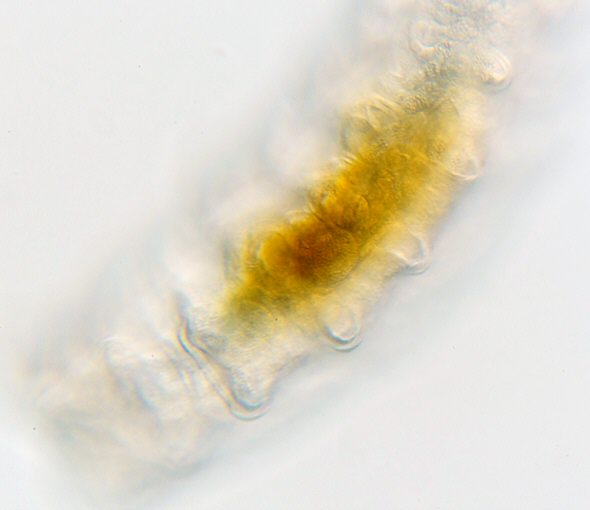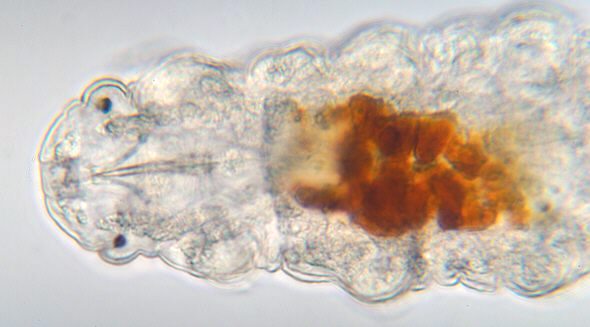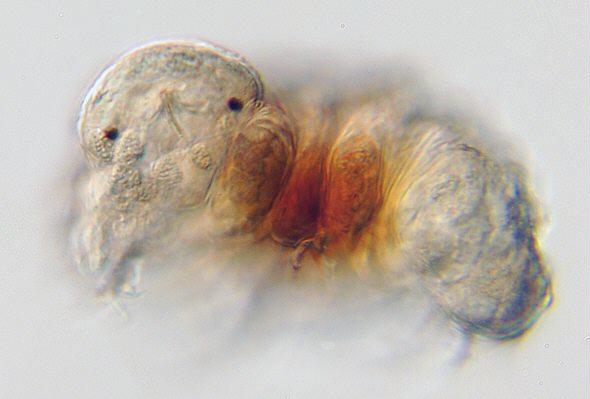![[Title fragment 1.1]](t1_1.gif)
![[Title fragment 1.2]](t1_2e.gif)
![[Title fragment 1.3]](t1_3e.gif)
![[Title fragment 3.1]](t3_1.gif)
![[Title fragment 3.2]](t3_2.gif)
![[Title fragment 3.3]](t3_3e.gif)
![[Title fragment 1.1]](t1_1.gif)
|
![[Title fragment 1.2]](t1_2e.gif)
|
![[Title fragment 1.3]](t1_3e.gif)
|
|
|
|
|
![[Title fragment 3.1]](t3_1.gif)
|
![[Title fragment 3.2]](t3_2.gif)
|
![[Title fragment 3.3]](t3_3e.gif)
|
A Diphascon tardigrade from Munich |
![[ Moss at the elevated banks of the river Isar channel ]](./mar2014/isar_moos.jpg) |
Typical moss growing alongside the river Isar channel, north of Munich |
This kind of tardigrade might be regarded as one of the more "worm-like" characters in the big family of tardigrades (sorry tardigrades!). The body appears to be rather elongated, with the short legs on both sides of the body barely visible. |
![[ Diphascon from Munich ]](./mar2014/bullatum_totale_kl.jpg) |
Diphascon tardigrade from the elevated banks of the river Isar channel, north of Munich.
|
Why do we think that this individuum has to be considered as a member of the Diphascon genus? Quite simply because all those Diphascon tardigrades have a rather long and flexible tubular connection between mouth tube and stomach (whereas in case of all other tardigrades this connection is rather short and straight, and far from flexible): |
![[ Diphascon tardigrade from Munich, head region. ]](./mar2014/bullatum_kl.jpg) |
Diphascon tardigrade from Munich, head region with flexible mouth tube connection. Please note the form and orientation pattern of the macroplacoids within the pharyngeal apparatus, looking similar to that of Macrobiotus hufelandi |
As a rule many microscopists are tremendously interested in the exact species attribution. In this particular case we hope to be able to correctly fulfill this urgent demand. When regarding the body from the side we can see that the backside silhouette is dominated by rows of rather distict protrusions (blobs): |
![[ Diphascon tardigrade from Munich, lateral view. ]](./mar2014/bullatum_lat_kl.jpg) |
Diphascon tardigrade from Munich, lateral view. |
And when focusing from top onto the dorsal region we note that those bumps are arranged in form of two rows running in parallel: |
 |
Diphascon tardigrade from Munich, focus on the protrusions on the backside. |
According to our literature (most of which is, admittedly, old
and therefore possibly slightly outdated) the tardigrade shown might be regarded
as a Diphascon bullatum. |
 |
Diphascon tardigrade from Munich, young animal, head region, as seen from top. |
 |
Diphascon tardigrade from Munich, young animal, front view. |
© Text, images and video clips by
Martin Mach (webmaster@baertierchen.de). |